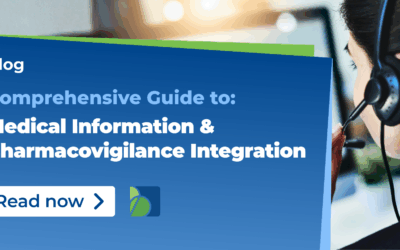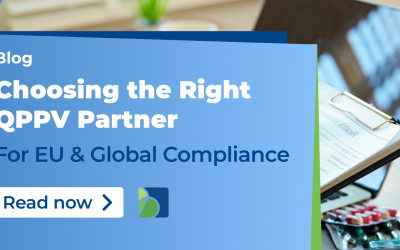Pharmacovigilance legislation introduced by the European Commission in 2012 and GVP guidelines together with local requirements committed each marketing authorization holder (MAH) to perform literature review in countries where their products are present.
According to these requirements, MAH should be aware that scientific and medical literature articles are a valuable and important source of information regarding the safety and efficacy profile of the medicinal product. Moreover, literature should be monitored not only for suspected Adverse Drug Reactions (ADRs) but also for other important safety information as lack of effect, off-label use, drug interactions, misuse and other information not consistent with the product label.
Compliance with mandatory requirements and guidelines is not always a simple task when local requirements and specifics come along. In this article, we will take a closer look at these challenges and specifics for local literature surveillance in different regions as EU, CIS and LATAM.
Setting the correct literature monitoring procedures
In GVP module VI clearly stated that regulators expect a comprehensive local literature monitoring to be assured by MAH in each territory where marketing authorization is granted. In order to fulfil these expectations, a clear search strategy determined before the search of local literature. Here are the four main aspects of consideration before selecting the right journals for search in various regions:
- Local medical journals relevance for product profile that includes peer-reviewed articles targeted for HCPs, describing study results, case reports or HCP’s experience to be selected with the highest priority;
- In some of the EU countries HAs have published recommended/expected to be screened lists of local journals for monitoring;
- In some of the CIS countries difficulties with journal subscriptions might arise – the medical journals can be sold in particular book kiosks, and many publishers are not possible to be reached directly due to the fact that head of the journal can be a minister, deputy or a person in a similar position;
- Each LATAM country is performing literature surveillance based on the local PV program of each country and has its own databases of journals high in number, however not much specified for each therapeutic area.
When specific and most relevant journals to the product profile are selected – another important aspect to consider for inclusion in search strategy by MAH is the reporting of safety information identified in local literature to local HAs. Before starting the monitoring of local literature in each country, answers to these questions should be clarified:
- Is it required locally to report to HA all in literature identified safety information, or is it only expected to be listed and discussed in PSURs?
- What are the local reporting timelines to the local HA if reporting is applicable?
- What is the correct documentation form of literature cases before submission to HA?
Challenge of local literature monitoring
Important local journals, published in the local language can provide vital information regarding the medicinal products and their safety, so pharmaceutical companies want to be sure that any signals coming from local literature are captured and assessed. However, when it comes to local literature monitoring, it often presents a problem for MAHs:
- Local journals are often printed in the native language, covering a small geographic location and targeted for the small audience. Depending on country size and number of specialists, medical journal numbers vary, however not all are available online;
- For smaller pharmaceutical companies where local offices are not present in countries where their drugs are marketed local literature monitoring sets a need for outsourcing;
- For the PDF online journals computer search functions cannot be trusted to be 100% accurate;
- Manual screening of the journals is very time consuming and requires a specialist with a higher degree in pharmaceuticals or medicine field to be able to make the assessment of identified safety information;
- In many EU countries like Ukraine, Spain, Hungary, Poland and LATAM region, numbers of published local journals are very high compared to the ratio of ADRs identified in the literature;
- In some of the CIS countries like Uzbekistan and Kyrgyzstan, the volumes of the journals can be quite large, consisting of more than 200 pages per one journal issue.
Issues with ADR reporting
Even though the importance of Pharmacovigilance and reporting of safety information related to medicinal products and devices are widely spread around the world, the rates of reporting safety information remain low in most of the EU, CIS and LATAM countries. This demonstrates the urge to educate the general public and HCPs:
- Notify that pharmacovigilance seeks prevention in favour of decreasing the risk of unwanted adverse events;
- Teach general public and HCPs in all regions that literature review is a part of the PV program;
- Explain how the information obtained from literature provides useful information for the safety and efficacy profile of the medicinal products;
- Motivate HCPs to analyze clinical cases related to adverse drug events and explain how their publications can contribute to better use of medications.
Requirements to proactively screen local literature as part of the Pharmacovigilance system for MAHs can come as a challenge in conducting the monitoring of local literature in most effective, least resource-intensive and high-quality adequate searches. Moreover, taking into account the specific expectations of local regulators from each country, an excellent result is a real challenge without knowledge of all local specifics for a literature review where MA is held.
To get more detailed information with local specifics, adjusted to your project and specific needs, contact us!
Egle Navickaite BSc
Pharmacovigilance Specialist
Biomapas
References:
- Regulation (EU) No 520/2012;
- GVP Module VI.App.2.1;
- GVP Module VI;









